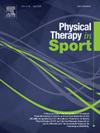大学运动员前交叉韧带移植破裂非手术治疗后恢复运动:一例报告
IF 2.2
3区 医学
Q1 REHABILITATION
引用次数: 0
摘要
接受前交叉韧带(ACL)重建的运动员可能会遇到随后的移植物断裂和翻修。目前的文献仅限于研究前交叉韧带修复后的运动表现和再损伤率。移植物破裂后非手术入路是否取得成功的临床结果尚未报道。病例描述:患者是一名20岁的男性运动员,最初在打排球时撕裂左前交叉韧带。在接受前交叉韧带重建和半月板修复八个月后,患者回到了全国大学锦标赛。然而,患者在术后15个月导致移植物破裂。选择了康复而不是修订,重点是运动相关的恐惧和排球特定的运动。结果:第二次损伤后7个月,患者在一系列跳跃距离和穿梭跑速度测试中达到了90%的对称性。膝关节结局调查运动活动量表的功能评分从37/55提高到55/55。心理准备程度由56/120提高到117/120。然后病人恢复了完全的比赛。结论个性化的物理治疗可以促进再损伤后的运动恢复。本病例报告说明了在运动康复中解决生物心理社会因素的重要性。本文章由计算机程序翻译,如有差异,请以英文原文为准。
Return to sport after graft rupture of anterior cruciate ligament with a nonoperative management in a collegiate athlete: a case report
Introduction
Athletes who undergo anterior cruciate ligament (ACL) reconstruction may encounter subsequent graft rupture and revision. The current literature is limited to investigating the sports performance and reinjury rate after revision ACL. Whether a nonoperative approach achieves successful clinical outcomes after graft rupture has not yet been reported.
Case description
The patient was a 20-year-old male athlete who initially tore the left ACL when playing volleyball. By eight months after receiving ACL reconstruction and meniscal repair, the patient returned to the national collegiate tournament. However, the patient ruptured the graft 15 months postoperatively. Rehabilitation rather than a revision was elected, which focused on movement associated fear and volleyball-specific movements.
Outcomes
By 7 months after the second injury, the patient achieved >90 % symmetry in a battery of hop distance tests and shuttle run speed. The functional score on the Knee Outcome Survey Sports Activities Scale improved from 37/55 to 55/55. The psychological readiness improved from 56/120 to 117/120 on the ACL–Return to Sport after Injury scale. The patient then returned to full competition.
Conclusion
Personalized physical therapy may provide an option to promote return to sport after reinjuries. This case report illustrates the importance of addressing biopsychosocial factors in sport rehabilitation.
求助全文
通过发布文献求助,成功后即可免费获取论文全文。
去求助
来源期刊

Physical Therapy in Sport
医学-康复医学
CiteScore
4.50
自引率
8.30%
发文量
125
审稿时长
39 days
期刊介绍:
Physical Therapy in Sport is an international peer-reviewed journal that provides a forum for the publication of research and clinical practice material relevant to the healthcare professions involved in sports and exercise medicine, and rehabilitation. The journal publishes material that is indispensable for day-to-day practice and continuing professional development. Physical Therapy in Sport covers topics dealing with the diagnosis, treatment, and prevention of injuries, as well as more general areas of sports and exercise medicine and related sports science.
The journal publishes original research, case studies, reviews, masterclasses, papers on clinical approaches, and book reviews, as well as occasional reports from conferences. Papers are double-blind peer-reviewed by our international advisory board and other international experts, and submissions from a broad range of disciplines are actively encouraged.
 求助内容:
求助内容: 应助结果提醒方式:
应助结果提醒方式:


